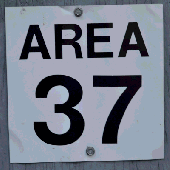-
Fri 17th Dec 2010 21:51 #1 / 42
I'm not sure who coined the name 'crab game', but it's when you get into a game situation where as soon as one player pulls ahead the rest of the players gang up on the leader and pull him back down with the rest.
I think my style of play probably contributes, but I seem to get into a lot of games like this, and as a player & map designer I have been thinking about it a lot (what follows are my somewhat rambling thoughts).
For the most part these games are not fun for me, and a lot of time we all vote to terminate, because it seems like it will never end(looking back over my history it is only 3 or 4 out of 45 games on wargear that we voted to end). In some ways that is ok with me. If no one can win, than a tie is appropriate, but still can we do better?
From a map designers perspective I consider it a failure if a lot of my games end by a vote to terminate, so one thing I would like is a statistic of the %of games that are terminated by vote. As a player I would also like to see this, so I can avoid them. This would probably need to be broken down by # of players, because I think the probability of ending up in crab game is highly dependent on that. (with larger groups & larger maps it seems to be more likely)
I know that a lot of the designers on here have way more experience than I do, so I am hoping that others will be able to provide some suggestions
There are two ways that we can attack this problem - one from a site-wide perspective, and one from a map designer's perspective.
From a map designer's perspective:
To crab-game, players need to know who is in the lead. With fog it may be possible to portray a weaker front while slowly becoming powerful enough to eliminate another player. (Although with fog, it is more difficult to tell if it is worth taking another player out, because you do not know how many cards they hold)This can also make for slow games if everyone is taking it slow trying to build up...which leads to...
If cards become dominant (when a set is worth a lot more than any player's territory bonus) then players MUST be able to isolate other players with chokepoints so they can deny them cards, or a crab game is likely.
Choke points also help by allowing players to be aggressive effectively. Players need to be able to expand to a more valuable holding and not increase choke points by much or at all. I think this is one reason why basic map has few crab games (A player can hold N&S America from only 3 spots,
etc.)
Other ways to keep cards from becoming dominant - slower rising card scale, rotating card scale, increase the # of points available on the board (more continents, etc.)
Giving attack bonuses may encourage players to be more aggressive.
From a site-wide perspective:
An option to have games terminate after N turns where the lead does not change. Either it is a tie, or the person with the lead the whole time wins.
An option to have cards unfogged while the board is fogged.
-
Wed 22nd Dec 2010 22:27 #2 / 42
I knew I should have gone with my alternate title: "How to keep RiskyBack from giving you crabs."

-
 Tue 4th Jan 2011 20:45 #3 / 42
asm and RiskyBack wrote:
Tue 4th Jan 2011 20:45 #3 / 42
asm and RiskyBack wrote:I'm not a huge fan of crab games, either, but I've definitely been in more than my fair share. There are a couple of basic criteria that need to be met for one to occur:
- Players are able to accurately determine who the leader on the board is and where said leader's income is generated.
- No single player is able to amass sufficient income to seriously disrupt another player's position without severely compromising their own.
Taking care of the first criteria is straightforward: Add fog. This is the only way to make boards like Antastic! playable, and it has the advantage of being simple and straightforward. Taking care of the second issue, however, can be a bit more complex, and is frequently where people are led astray. The key ingredients to the second issue are income and cost of elimination. If there is no way for the leader of the board to raise sufficient income to overcome the cost of elimination, they will never eliminate another player. It's not in their best interest. Fortunately, there are some straightforward ways to address this.
Size: Can a leader eliminate a remaining player in one turn? On larger boards, the square-cube law can bite the board designer in the rear - the number of territories is increasing faster than the income and the number of attack points. If that happens, there are three questions that immediately come up:
- Can the leader at least disable the remaining player?
- If so, how badly will the leader compromise their defensive position by doing so? Will they be able to weather the onslaught from the remaining opponents?
- Will disabling the remaining player put them in a position where they will be eliminated by another player? If so, what will be gained by the eliminating player?
There are straightforward fixes to all of these questions. The easiest, of course, would just to be to ramp income high enough where the leader can safely eliminate players without complaint - this would lead to quick, aggressive, "first past the post" games. They'd also probably be biased toward the first player. Alternatively, answering each of the previous questions in turn...
#1 can be prevented by setting incomes high enough to do real damage. Keep in mind that, in a crab game, defenses are roughly equal among all players, so the question is, if a player places all of their units on one point, how far will they go past the initial stranglehold? If the answer is "10 spaces out of 200", that's not going to do much. If the answer is "100 spaces out of 200", that's a different story.
#2 is where things get tricky. Either the leader needs to be able to position themselves where they can only be attacked at a few points by a limited number of players (lots of really tight strangleholds) OR things need to be so wide-open that it's impossible to play trench warfare-style defense and it forces everyone to play defense in depth. The latter only makes sense if income is high enough to do real damage past the defensive lines, of course.
#3 relates to cards, so let's touch on that.
Cards: Cards can make or break a large board. If cards are scaled "just right", they can throw a board into complete stalemate for days (weeks!) at a time. The reason for this is obvious - cards can be used by disadvantaged players to beat down a superior player. If the leader is unable to eliminate another player and seize their cards, they only have a turn or two at most to wrap things up before the remaining players are able to use their cards to beat the leader back down to size. Is that enough time? Does the leader run the risk of having their target eliminated by someone else if they go for the elimination and fail? How big is that risk?
The solution is straightforward: Either make cards virtually worthless (scaling them at 5,5,5,5,...etc.), so that there's no risk in a potential elimination and no risk of opposing players using cards to keep everyone in line, or set card scaling high enough where they reach the point where players can safely eliminate each other with them (this goes back to tweaking income). I recommend flat scaling on large boards - it makes things less "lucky" and more about skill. On the other hand, flat scaling demands that income be high enough for leaders to exploit their lead, otherwise you're still going to have stalemates.
Ultimately, it all comes down to finding a way to design the board in a way that encourages people to take the lead, instead of punishes them for it.
I... can't find anything wrong with this line of reasoning...
-
 Thu 3rd Feb 2011 21:17 #4 / 42
Thu 3rd Feb 2011 21:17 #4 / 42
I really appreciate the thought you put into your response. I think your ultimate conclusion is correct, and often times what works is highly board dependent and hard to put into a simple heuristic.
Some more thoughts...
First, let me introduce the terminology of 'turtling', which is when you are putting the majority of your income into defense, and just attacking at the easiest place to get a card. Often times crab games & turtling go hand in hand.
"#1 can be prevented by setting incomes high enough to do real damage."
I'm not sure if this will usually work. If everyone is turtling, then ramping up income, means that defenses will just be bigger also. If the income comes in spurts, then that might help because the income is not there every turn to put into defense, but is just available occasionally for a big offensive push. For example, I have a game where cards cycle 16,18,..30,32 & you can hold 8 cards.
Most of the time players are just getting their territory+continent bonus, but every 6 turns they can turn in two sets of cards, and with some luck & timing, they can get 50+ units from that. Of course this doesn't keep players from just banking that windfall on defense.
I've come across a couple of other tools that conceptually I think would help with the crab game, but I have not put into practice yet.
1st - Giving bonus units for eliminating another player. This is nice in two ways, first of all, a couple of extra units might be just what it takes to bring eliminating a player from not worth it, to worth it. Also, when you get these units you go back to the unit placement phase, so you can turn in cards without having to wait until next turn.
The only problem with this, is that it doesn't scale well over time. Giving 10 units for elimination might be a nice bonus early in the game, but negligible in the end game. Ramp it up enough to be significant in the end game (where most crab games occur), and now it's a huge bonus in the early game, and first player to take someone out is likely to win.
What I would really like is the option to give a bonus card (or multiple cards) for eliminating an opponent, which would help solve the problem of the bonus value not keeping up with the player bonuses.
2nd - Capitals. Adding capitals can also help in two ways. If a player has a capital it is easier to take them out, because you don't need to eliminate every one of their units. Making it easier for the dominant player to take out a weaker one gets you out of the crab game. Secondly, if you set the option to have some % of leftover units get owned by the eliminator, that gives them an additional bonus similar to getting the elimination bonus discussed above. And this will possibly scale in time. I haven't played many capital games, but one problem might be if players are more likely to play defensively to keep from losing their capital, and making turtleing more likely. Allowing players to have more than one capital could help with this dynamic.
Other thoughts/questions...
Will increasing starting unit counts from 3 to 4 make a crab game more likely? Does it give too much of an advantage to player 1? How about decreasing from 3 to 2, and giving players a starting reserve (as long as everyone is getting the minimum bonus, so last player doesn't get screwed by that)?Edited Thu 3rd Feb 21:18 [history]
-
 Thu 3rd Feb 2011 22:28 #5 / 42
BAO alternative:
Thu 3rd Feb 2011 22:28 #5 / 42
BAO alternative:Ozyman wrote:
What I would really like is the option to give a bonus card (or multiple cards) for eliminating an opponent, which would help solve the problem of the bonus value not keeping up with the player bonuses.
Many games make it such that you get the cards of the player you are taking out. Typically,weaker players are weak in part because they haven't been able to cash for a few rounds. These two symptoms of weakness (lower army count and high card count) often go hand in hand and can often be exploited in many crab games.
https://sites.google.com/site/m57sengine/homeEdited Thu 3rd Feb 22:29 [history]
-
 Fri 4th Feb 2011 01:19 #6 / 42
Longest innings. Most deadly.
Fri 4th Feb 2011 01:19 #6 / 42
Longest innings. Most deadly.Good stuff. Big card cycles are also an intriguing option, shifting focus between cards and continents.
-
 Fri 4th Feb 2011 14:49 #7 / 42
Fri 4th Feb 2011 14:49 #7 / 42
Ozyman wrote:
1st - Giving bonus units for eliminating another player. This is nice in two ways, first of all, a couple of extra units might be just what it takes to bring eliminating a player from not worth it, to worth it. Also, when you get these units you go back to the unit placement phase, so you can turn in cards without having to wait until next turn.
What I would really like is the option to give a bonus card (or multiple cards) for eliminating an opponent, which would help solve the problem of the bonus value not keeping up with the player bonuses.There is a time where you don't go back to Place, ie if the Elimination Bonus is less than the number of Reserves allowed then the bonus will just go into your Reserves for next round.
Capturing Cards is nearly a must for a lot of boards. The incentive for eliminating a player has to be greater than the incentive to "turtle", and the payoff has to be relatively quick (either same round or next round).
The tough call is setting that Elimination Bonus (the troops+cards) to a setting where the first player to eliminate someone gets to go on a complete Elimination run.
One map that I think handles this surprisingly well is Risky's Risky Kong II, Eliminations have nice perks and quick eliminations can happen, but don't necessarily completely ruin the game.
Another surprising map that I like is Ender's EVE Universe, Eliminations don't really happen early on (due to troop counts and Neutral obstructions), but with the semi-quick card scale and the very generous +15 Elimination Bonus (placed immediately), setting up to go on a big cascading elimination run takes a good amount of strategy.
I think both of these maps have a good potential to crab/turtle without these elimination settings and the perks attributed to them. Eve's continents and bonus per territory structure is also set in a way in which they are significant as well, which can also be a balancing act to ensure the board doesn't become irrelevant.
Capitals can aid, but they also pretty drastically change the whole gameplay so unless the board is designed for Capitals, then throwing Capitals in to aid with endgame may effect the game as a whole in a negative way.
Fog of course is one way in which to somewhat curb stalemates.
Also, a bonus structure with negatives can help in quickly breaking up bonuses and bringing an end to a game. Examples of this would be Cram's Fallout/Road Warrior or Risky's Risk vs Reward.
Then of course there is more too, but I'm tired of writing for now :p
Check out WarGear Gear at the WarGear Zazzle Store! "But many who are first will be last, and many who are last will be first." Matthew 19:30 - Good strategy for life and WarGear!
-
 Fri 4th Feb 2011 16:26 #8 / 42
People Always Leave
Fri 4th Feb 2011 16:26 #8 / 42
People Always LeaveDude, Dr Horrible (who is a prick) made Risk vs Reward, not me!
This thread is putting the whole blame on the map maker for these games and I feel that more times than not it is because of the play of the people in the game. A lot of players on this site play to "Not Lose" rather than "To Win". If every round of turns is just 1 attack, get card, end turn, then every map can turn into this type of game.
Die Emoticons, DIE! can easily turn into a game that feels like a draw if nobody ever does anything. You have to try to take a Risk to win a game sometimes. That was part of the concept of that map. Strategy is about out thinking your opponent, sure, but it is also about capitalizing on circumstances and there comes a time in games where guarding your bonuses is not as important as grouping your units and going for the kill.
So players blame the map and the map maker blames the players.
Tomato..........TO-MA-Toe
-
 Fri 4th Feb 2011 18:33 #9 / 42
BAO alternative:
Fri 4th Feb 2011 18:33 #9 / 42
BAO alternative:RiskyBack wrote:
Dude, Dr Horrible (who is a prick) made Risk vs Reward, not me!
This thread is putting the whole blame on the map maker for these games and I feel that more times than not it is because of the play of the people in the game. A lot of players on this site play to "Not Lose" rather than "To Win". If every round of turns is just 1 attack, get card, end turn, then every map can turn into this type of game.
Die Emoticons, DIE! can easily turn into a game that feels like a draw if nobody ever does anything. You have to try to take a Risk to win a game sometimes. That was part of the concept of that map. Strategy is about out thinking your opponent, sure, but it is also about capitalizing on circumstances and there comes a time in games where guarding your bonuses is not as important as grouping your units and going for the kill.
So players blame the map and the map maker blames the players.
Tomato..........TO-MA-Toe
I always say Tomato.
Of course the question we all ask ourselves as players is, "What is the best strategy?" With some boards, this question is easier to answer than others. We can put blame on the designer in the case of those boards because turtling can be discouraged by a well-designed board. For instance by making continental bonuses too valuable to ignore.
On the other hand for many boards, regardless of design, depending on how your opps start out, how many opps there are, fog, other variables, etc., it may be best practice to turtle.
https://sites.google.com/site/m57sengine/home
-
 Fri 4th Feb 2011 20:41 #10 / 42
Fri 4th Feb 2011 20:41 #10 / 42
M57 wrote:
Ozyman wrote:
What I would really like is the option to give a bonus card (or multiple cards) for eliminating an opponent, which would help solve the problem of the bonus value not keeping up with the player bonuses.
Many games make it such that you get the cards of the player you are taking out. Typically,weaker players are weak in part because they haven't been able to cash for a few rounds. These two symptoms of weakness (lower army count and high card count) often go hand in hand and can often be exploited in many crab games.
I never thought of that before, but it definitely makes sense. Unfortunately fog is one of the best ways to reduce the chance of a crab game, but it also makes it harder to be certain that you are actually going to get a decent # of cards.
-
 Fri 11th Feb 2011 21:03 #11 / 42
Fri 11th Feb 2011 21:03 #11 / 42
One other thing I have thought of doing is increasing the # of dice sides for large maps. I was thinking of making d8 or d10 the default on my maps that have more than about 70 territories. Anyone have any thoughts or experience with going this route?
-
 Fri 11th Feb 2011 21:05 #12 / 42
BAO alternative:
Fri 11th Feb 2011 21:05 #12 / 42
BAO alternative:Ozyman wrote:
One other thing I have thought of doing is increasing the # of dice sides for large maps. I was thinking of making d8 or d10 the default on my maps that have more than about 70 territories. Anyone have any thoughts or experience with going this route?
Why would you do this? What does it accomplish?
https://sites.google.com/site/m57sengine/home
-
 Fri 11th Feb 2011 21:08 #13 / 42
Fri 11th Feb 2011 21:08 #13 / 42
M57 wrote:
Why would you do this? What does it accomplish?
It makes it even better to attack then to defend.
-
 Fri 11th Feb 2011 21:17 #14 / 42
BAO alternative:
Fri 11th Feb 2011 21:17 #14 / 42
BAO alternative:..then why not d7 v d6?
https://sites.google.com/site/m57sengine/home
-
 Fri 11th Feb 2011 21:25 #15 / 42
Fri 11th Feb 2011 21:25 #15 / 42
M57 wrote:
..then why not d7 v d6?
d7vd6 is on average 0.48 attackers lost per defender.
d8vd8 is on average 0.76 attackers lost per defender
d10vd10 is on average .71 attackers lost per defender.
for reference d6vd6 is .85.
So d8vd8 or d10vd10 is a lot smaller change, and I feel it would give a slight boost to the attacker, without making it an all out offensive game which d7vd6 seems to lead to.
Also, as a long time (& a long time ago) D&D player, things like d7 just seems so unnatural. Kind of a weird hangup, but I just don't like it...
-
 Fri 11th Feb 2011 22:32 #16 / 42
Fri 11th Feb 2011 22:32 #16 / 42
I thought of two games that had extra sided dice that players might be familiar with.
Feudal Japan uses d8vd8: http://www.wargear.net/boards/view/Feudal+Japan/Rules
And IIRC, battle matrix from ToS used d16vd16, which I believe gives a .64 attacker loss/defender loss.
-
 Sat 12th Feb 2011 00:20 #17 / 42
Never Start Vast Projects With Half Vast Ideas.
Sat 12th Feb 2011 00:20 #17 / 42
Never Start Vast Projects With Half Vast Ideas.What does "d6 v d6 is on average .85 attackers lost per defender" mean?
With 3 attacking 2, there is an expected (average) loss of .92 or .46 average loss per defender.
-
 Sun 13th Feb 2011 21:41 #18 / 42
Sun 13th Feb 2011 21:41 #18 / 42
Alpha wrote:
What does "d6 v d6 is on average .85 attackers lost per defender" mean?
With 3 attacking 2, there is an expected (average) loss of .92 or .46 average loss per defender.
It should say that on average .85 attackers lost per defenders lost.
The .92 is the avg. # of loses for the attacker on a single roll of 3v2 with d6 dice. But, we know that there are 2 loses every turn in that situation, so that means the defender loses the other 1.08 guys each turn. Divide .92 (attack loses) /1.08 (defense loses) and you get .85 .
But that is not how I got that number, I'm actually basing these numbers on the odds calculator that I wrote that is available at:
http://prestopnik.com/wargear/
(the one on the right).
What it does is go through every possible dice combination, accumulate losses for the attacker & defender and then divides total attack loses by total defense loses. The odds calculator is in javascript, so you can see exactly what it is doing by looking at the source on that page, although it is probably not the most elegant code because I was just learning javascript when I wrote it.I also checked my math by looking at the odds table on the wikipedia page for Risk, which states that for 3v2:
Defender loses two - 37.17% Attacker loses two - 29.26% Each loses one - 33.58 So:
Average Defender Loses = 2*.3717 +.3358= 1.0792
Average Attacker Loses = 2*.2926+.3358 = 0.921
0.921/1.0792 = 0.853409933So, it is just a different way to look at the #s and to me it seemed like the most useful statistic
Edited Sun 13th Feb 21:42 [history]
-
 Sun 13th Feb 2011 21:45 #19 / 42
Sun 13th Feb 2011 21:45 #19 / 42
Yertle wrote:
There is a time where you don't go back to Place, ie if the Elimination Bonus is less than the number of Reserves allowed then the bonus will just go into your Reserves for next round.
Thanks for the heads up Yertle. I did not know that. Also thanks for the map recommendations, I will be sure to check them out.
-
 Sun 13th Feb 2011 22:01 #20 / 42
Sun 13th Feb 2011 22:01 #20 / 42
Escalation's d8 v d6 (3 to 1 attacker edge) is an extreme example, but one I like as far as giving attacker an incentive. Yertle's examples are some of my favorite attacker incentive games.
I don't know if I've seen this implemented, but I would like to see a d6 vs d6 war of attrition game. No bonuses, no cards. Both sides start with some armies and whoever is alive at the end wins. Probably need an attack limit, some fog and some artillery border modifier spots to make it interesting. That would be an anti-crab game.















